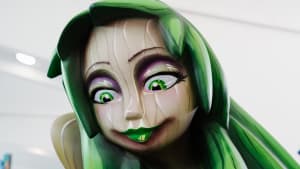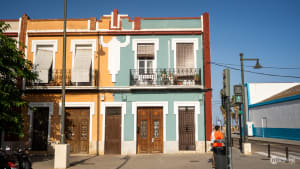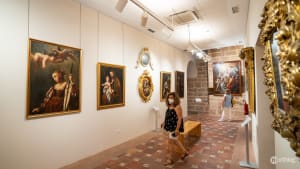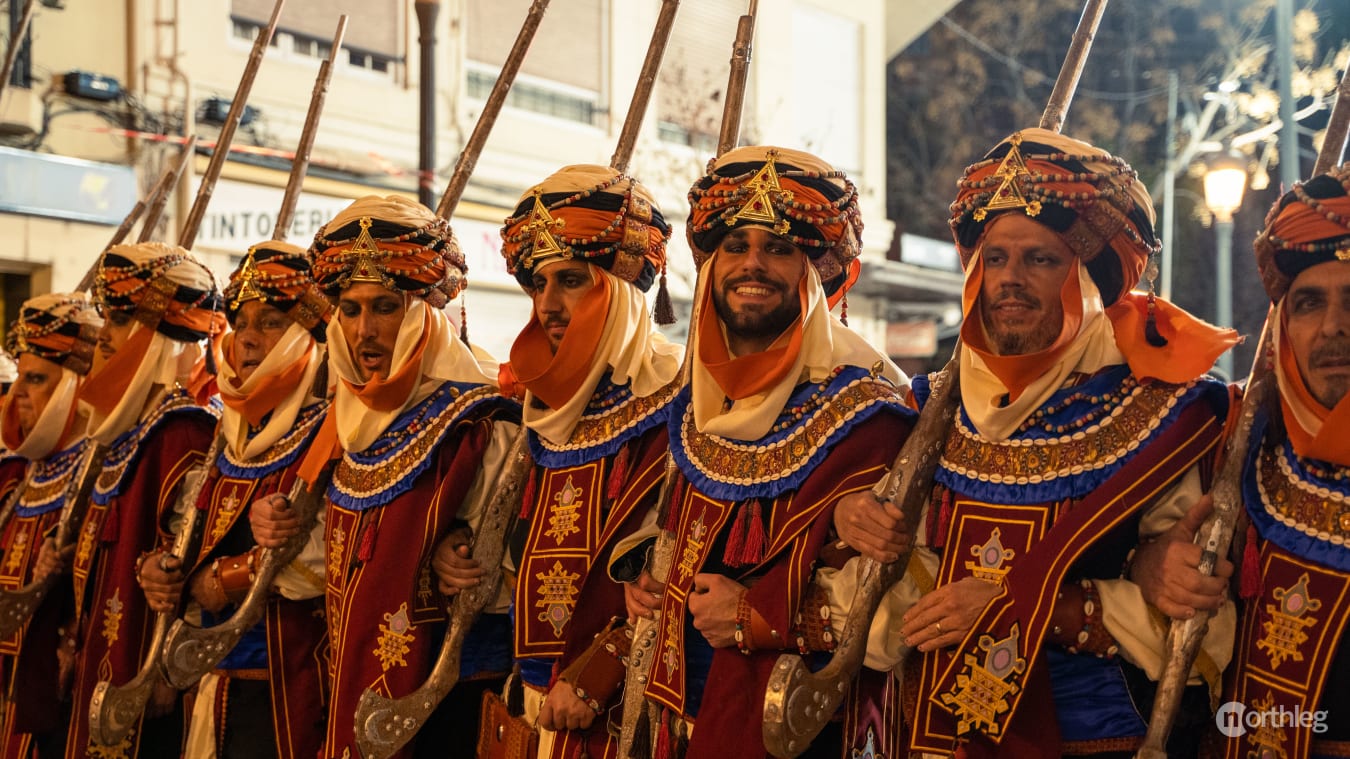
Moros y Cristianos
A flashy, loud and colourful parade inspired by Spain’s Moorish and Christian past. Horses, dancers, and battle reenactments animate the streets of Valencia
Moros y Cristianos in a nutshell…
A vibrant, theatrical parade reenacting the battles between Moors and Christians during the Spanish Reconquista. Expect elaborate costumes, marching bands, cavalry performances, and firework displays as the event brings history to life.
Moros y Cristianos, meaning Moors and Christians (also spelled as Moros i Cristians in Valencian), is a themed parade that takes place in Valencia under Fallas, bringing even more colour, music, and festive atmosphere to the city than there already is. The event is supposed to commemorate the battles and clashes between Muslims and Christians during the Spanish Reconquista (8th to 15th century).
Even though the theme is rooted in real events, the parade is much more of a series of theatrical performances than a historically accurate rendition. Nonetheless, Moros y Cristianos is considered a historic celebration of the territory and extremely representative of the Valencian land.
In fact, many different versions of Moros y Cristianos exist throughout the region. You’ll even find that there are two of these events in the city. One sometimes takes place during Fallas - this is the one we are focusing on in this article. The other takes place during the Nou d’Octubre (9th of October) celebrations - the Day of the Valencian Community.
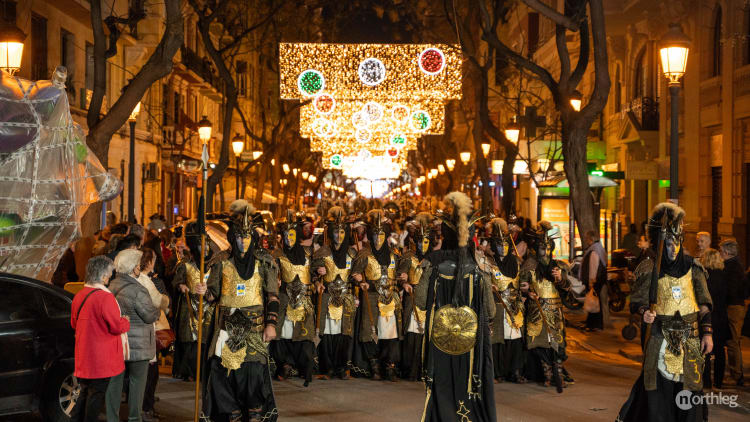
This doesn’t mean that this kind of festivity is exclusive to Valencia. Other cities in Spain, especially in Andalusia, as well as in the Philippines and in the Americas, have their own versions of the festival. Of course, the celebrations are all different, but what attracts the public stays pretty much consistent everywhere.
These parades are full of colours, they have traditional music, floats, dances, and cavalry. As this is Valencia we are talking about, gunpowder and fireworks could not be missing. You can expect to see over-the-top costumes very loosely inspired by Medieval clothing. Furs, armours, scimitars, swords, head scarves and heavy fabrics are all recurring elements.
The two Fallas committees that, along with the Federació Valenciana de Moros i Cristians, participate most actively in these parades are falla Pío XI-Fontanares andfalla Almirante Cadarso – Conde Altea. These committees organise their filaes or comparses (companies of impersonators) to take part in the event and entertain the public with their dances or reenactments.
Program
The program tends to differ slightly for every parade, but there are some recurring elements that can be seen during many Moros y Cristianos events.
- Marching drum bands.
- Collas de dolçainas and tabalets.
- Parades of Moorish and Christian impersonators.
- Performing dancers.
- Floats.
- Caballos batidores (similar to parade horses).
Aside from the parade and its acts, a firework display normally follows the event. On the occasion of the first parade, a verbena is normally organised by the hosting fallas committee.
Moorish and Christian impersonators
Their parades are the main point of the event, and they can be inspired by a series of historical events. Here are some of the most commonly represented.
First of all, are the unmissable entrada Mora and entrada Cristiana - the Moorish entry into the city and the Christian entry into the city. These signify the beginning and end of the Muslim dominion and the Christian Reconquista.
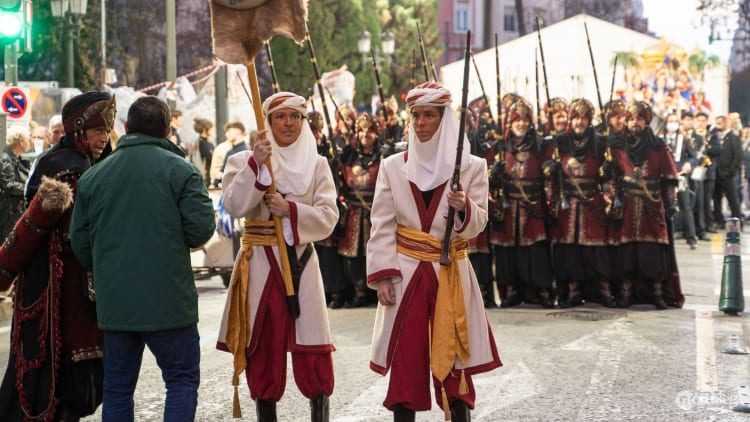
The alardo is a battle between Moors and Christians, usually with the presence of arquebuses (a 15th-century long firearm used both in the Ottoman Empire and Europe).
You could also see anestafeta. In it, a message bearer brings news to the opposing army, and after facing a refusal, he returns to his own troops in a fast race. Another representation is the embajada. Here, the Ambassador, accompanied by his escort, holds a speech to the opposing army.
Common figures to watch out for are the cabo and caballo batidor - the parade horse and its horseman. The rider usually makes the horse advance in a controlled and flashy walk, and then gallop back to the squadron. The two are so called because their original purpose was to beat the terrain that opened up in front of their troops.
Frequently Asked Questions
Here you can find quick answers to all of your questions. Linked, you’ll find the articles or the sections of the articles that can give you more detailed information.
-
Moros y Cristianos is a commemoration of the battles and clashes between Muslims and Christians during the Spanish Reconquista (8th to 15th century).
-
Although there is a Moros y Cristianos festival in Valencia in October, sometimes during Fallas there are a couple of Moros y Cristianos parades.
They usually are on the last day of Fallas (19th of March) and on the Saturday preceding the Semana Fallera.
-
For the Moros y Cristianos parades during Fallas, it depends on the day. The first one is normally on Carrer de Pius XI, 28. The second one is on Carrer del Comte d’Altea, 20.
-
No, sometimes there are also Moros y Cristianos parades during Fallas.
-
Usually, during a Moros y Cristianos event, you can see historical reenactments and parades with outlandish costumes. Common elements are marching bands, performing dancers, floats, and cavalry shows.



